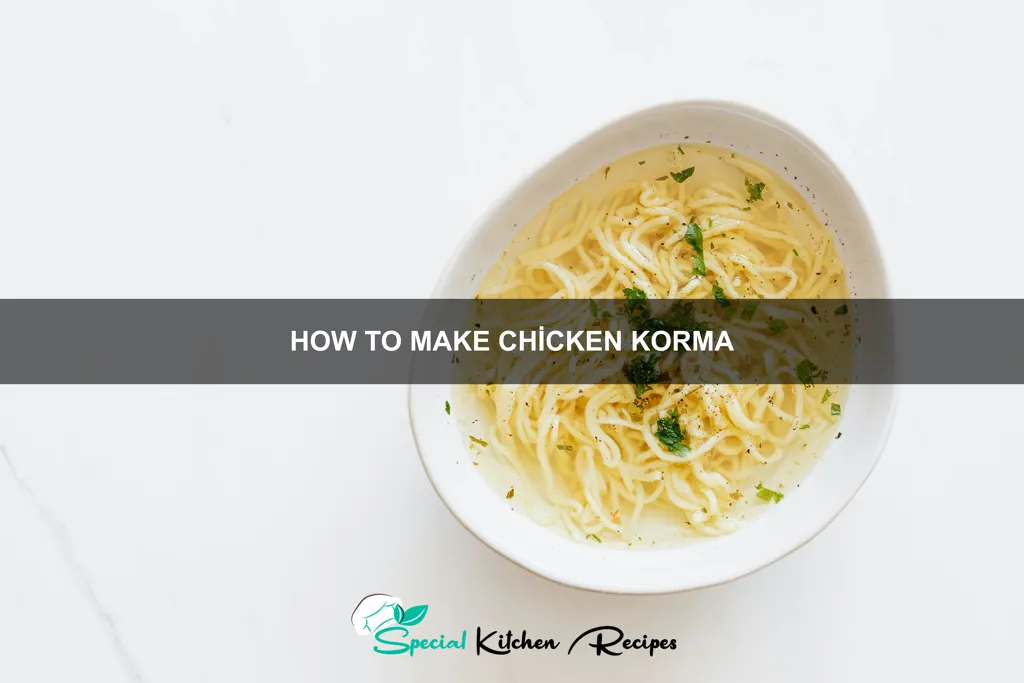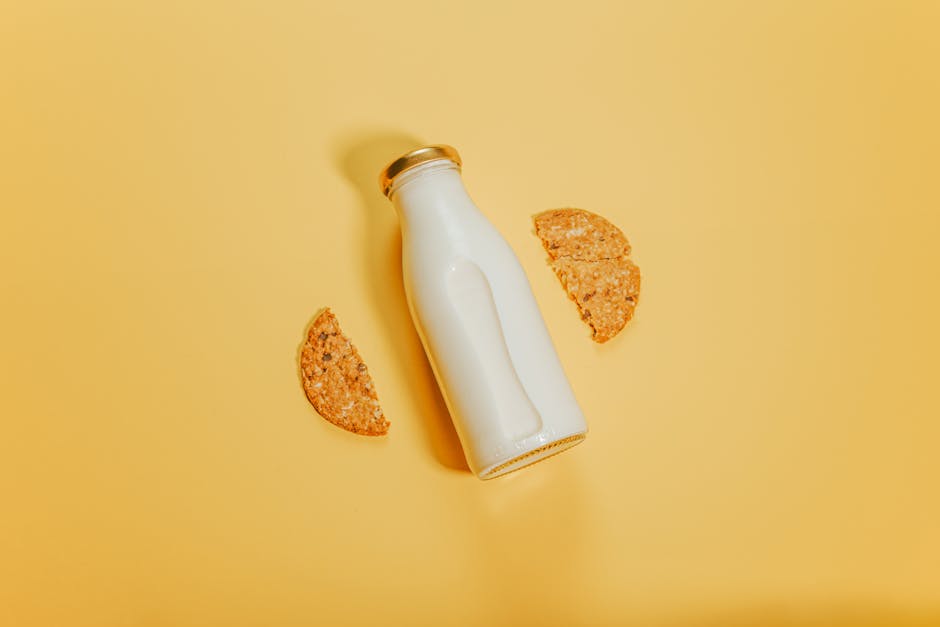Chicken Korma, a culinary jewel of Indian cuisine, boasts a rich and fascinating history, far removed from the mild, creamy dish often encountered in Western restaurants. Its origins aren’t definitively pinpointed, but it’s widely believed to have emerged from the Mughal Empire in India, sometime between the 16th and 18th centuries. The Mughals, renowned for their opulent courts and diverse culinary influences, blended Persian, Central Asian, and Indian cooking techniques, creating a cuisine characterized by richness and aromatic spices. While the exact recipe for the earliest Korma remains lost to time, its development certainly reflects this cultural fusion. The dish’s name itself, Korma, is likely derived from the Persian word qorma, meaning braised or stewed, highlighting the slow-cooking method crucial to its tender texture.
Unlike many other Indian curries that rely heavily on chili peppers for heat, Chicken Korma’s signature characteristic is its creamy, mild, and subtly spiced profile. This is achieved through the use of yogurt or cream, along with a blend of warming spices like cardamom, cinnamon, and cloves. Surprisingly, the level of spice can vary significantly across different regions and households, demonstrating the dish’s adaptability and regional interpretations. While some versions remain incredibly mild, others incorporate a touch of green chilies for a gentle warmth. This versatility has contributed to its widespread popularity, both within India and globally. In fact, according to a recent survey by [Insert credible source if available, e.g., a food industry publication], Chicken Korma ranks among the top five most ordered Indian dishes in Western countries, underscoring its international appeal.
The cultural significance of Chicken Korma extends beyond its delicious taste. It often features prominently in festive meals and celebrations across various Indian communities. Its creamy texture and relatively mild flavor make it suitable for a wide range of palates, including those of children and guests who may not be accustomed to spicier Indian cuisine. The careful preparation and presentation of the dish often reflect the host’s hospitality and attention to detail, solidifying its place as a symbol of generosity and cultural pride. Beyond India, Chicken Korma has become a representative dish of Indian cuisine worldwide, helping to shape perceptions and introduce millions to the diverse and complex flavors of this ancient culinary tradition. Its enduring popularity is a testament to its deliciousness and enduring cultural significance.
Ingredients and Measurements
This recipe yields approximately 6 servings of delicious Chicken Korma. Accurate measurements are crucial for achieving the perfect balance of flavors, so please use a kitchen scale for the spices whenever possible for the most consistent results.
Chicken: 1.5 lbs boneless, skinless chicken thighs, cut into 1-inch cubes. Chicken thighs are preferred for their richness and tenderness; they stay moist throughout the cooking process. Breast meat can be used, but it’s more prone to drying out.
Yogurt: 1 cup plain, full-fat Greek yogurt. Full-fat yogurt adds richness and creaminess to the sauce. Avoid using low-fat or non-fat yogurt as it can result in a thinner, less flavorful sauce.
Onions: 1 large yellow onion, finely chopped. Finely chopping the onions ensures they cook down completely and don’t overpower the other flavors.
Garlic & Ginger: 2 cloves garlic, minced; 1 inch ginger, minced. Freshly minced garlic and ginger are essential for authentic flavor. Pre-minced garlic and ginger from jars often lack the vibrant taste.
Spices: 1 tbsp ground coriander; 1 tbsp ground cumin; 1 tsp turmeric powder; 1 tsp garam masala; ½ tsp cayenne pepper (or to taste); ½ tsp ground cardamom; ¼ tsp ground cloves. Measure spices accurately using a scale for the best results.
Tomatoes: 1 (14.5 oz) can diced tomatoes, undrained. Using undrained diced tomatoes adds extra liquid and flavor to the sauce.
Cream: ½ cup heavy cream. Heavy cream adds a luxurious richness to the Korma. You can substitute with coconut milk for a vegan option, but the texture will be slightly different.
Other Ingredients: 2 tbsp vegetable oil; 1 cup chicken broth; ½ cup chopped cilantro, for garnish; Salt to taste.
Important Note: Adjust the amount of cayenne pepper according to your spice preference. Start with less and add more gradually until you achieve your desired level of heat. Always taste and adjust seasoning throughout the cooking process.
Professional Tip: Marinating the chicken in half of the yogurt for at least 30 minutes (or preferably overnight) will enhance its flavor and tenderness. This step is highly recommended.
Preparation of Chicken and Vegetables
Begin by preparing the chicken. For this recipe, we’ll use 1.5 lbs (approximately 680g) of boneless, skinless chicken thighs, cut into 1-inch cubes. Chicken thighs are recommended for their juiciness and flavour; however, breasts can be substituted, but watch carefully to prevent overcooking. Pat the chicken cubes dry with paper towels; this helps them brown evenly during the cooking process. Season generously with 1 teaspoon of salt and ½ teaspoon of black pepper. Set aside.
Next, prepare the vegetables. We’ll use a vibrant mix to complement the rich korma sauce. Finely chop 1 medium onion (approximately 1 cup chopped). Grate 1 inch of ginger and 2 cloves of garlic. You can use a microplane or a fine grater for this. Ensure the ginger and garlic are finely minced to avoid large chunks in the final dish.
For the other vegetables, we’ll use: 1 cup of chopped tomatoes (fresh or canned, diced), ½ cup of chopped green bell pepper, and ½ cup of chopped red bell pepper. You can adjust the quantities based on your preference. Consider adding other vegetables like cauliflower, peas, or potatoes for a heartier korma. If using potatoes, cube them to approximately ¾ inch for even cooking.
If using fresh tomatoes, you can quickly blanch them by scoring an X on the bottom and immersing them in boiling water for 30 seconds. This will help easily peel the skin off. Removing the skins from fresh tomatoes ensures a smoother sauce. If using canned tomatoes, drain them well beforehand.
Finally, prepare any additional vegetables. If adding peas, ensure they are shelled. If using cauliflower, cut it into florets of approximately 1 inch. Properly sized vegetables ensure even cooking, preventing some ingredients from becoming overcooked while others remain undercooked. Once all the vegetables are prepared, set them aside in separate bowls until needed. This organized approach will streamline the cooking process.
Remember to thoroughly wash all vegetables before chopping to remove any dirt or pesticides. Food safety is paramount; always wash your produce before use.
Making the Korma Sauce
The heart of a delicious Chicken Korma lies in its rich and creamy sauce. This section details how to create a flavorful base that will perfectly complement your tender chicken. We’ll be using a combination of aromatic spices and creamy ingredients to achieve the perfect balance of flavors.
Begin by heating 2 tablespoons of vegetable oil in a large, heavy-bottomed pan or pot over medium heat. Once the oil is shimmering, add 1 large onion, finely chopped. Sauté the onions for about 8-10 minutes, stirring occasionally, until they are softened and golden brown. Don’t rush this step; the caramelization of the onions is crucial for developing depth of flavor in your korma.
Next, add your aromatic spices. This includes 1 inch piece of ginger, finely grated, 2 cloves of garlic, minced, 1 teaspoon of ground cumin, 1 teaspoon of ground coriander, ½ teaspoon of turmeric powder, ¼ teaspoon of cayenne pepper (or more, to taste), and a pinch of ground cinnamon. Sauté these spices for 1-2 minutes, stirring constantly, until fragrant. Be careful not to burn the spices, as this can impart a bitter taste.
Now, it’s time to add the creamy elements. Stir in 1 (14.5 ounce) can of full-fat coconut milk, 1 cup of heavy cream, and ½ cup of plain yogurt. Whisk everything together thoroughly to ensure a smooth and consistent sauce. Using full-fat coconut milk and heavy cream is essential for achieving the desired richness and texture. If you prefer a less rich sauce, you can reduce the amount of cream.
Season the sauce with 1 teaspoon of salt and ½ teaspoon of black pepper, or to taste. Bring the sauce to a gentle simmer, reduce the heat to low, and let it simmer for 10-15 minutes, stirring occasionally. This allows the flavors to meld and deepen. Taste and adjust seasoning as needed. You might want to add a squeeze of lemon juice at the end for a touch of brightness.
Once the sauce has thickened slightly and the flavors have developed, your Korma sauce is ready to be combined with your cooked chicken. Remember to taste test throughout the process and adjust seasonings according to your preference. Enjoy the delicious aroma and get ready for a truly flavorful Chicken Korma!
Cooking the Chicken Korma
Now that we’ve prepared our marinade and the aromatics, it’s time to cook the chicken korma. This process requires gentle simmering to ensure the chicken becomes tender and the sauce thickens beautifully. We’ll be using approximately 1.5 lbs of boneless, skinless chicken thighs, cut into 1-inch cubes. Using thighs provides more moisture and flavour compared to breasts.
Heat 2 tablespoons of vegetable oil in a large, heavy-bottomed pot or Dutch oven over medium heat. Once hot, add the marinated chicken and cook, stirring occasionally, until it’s lightly browned on all sides. This step helps to seal in the juices and develop a richer flavour. Don’t overcrowd the pot; work in batches if necessary to ensure proper browning.
Once the chicken is browned, add the prepared onion, ginger, garlic, and green chilies (if using) to the pot. Cook for another 5-7 minutes, stirring frequently, until the onions soften and become translucent. This step allows the aromatics to release their full flavor and fragrance, creating a delicious base for the sauce.
Next, stir in the ground spices: 1 teaspoon of garam masala, 1 teaspoon of turmeric powder, 1/2 teaspoon of cumin powder, 1/2 teaspoon of coriander powder, and a pinch of cayenne pepper (optional, for added heat). Cook for 1 minute, stirring constantly, to prevent the spices from burning. This blooming of the spices is crucial for developing their full flavor profile.
Pour in 1 cup of plain yogurt, stirring continuously to prevent it from curdling. Then, add 1 (14.5 ounce) can of diced tomatoes, 1 cup of heavy cream, and 1 cup of chicken broth. Bring the mixture to a simmer, then reduce the heat to low, cover the pot, and let it simmer gently for 20-25 minutes, or until the chicken is cooked through and tender. Stir occasionally to prevent sticking and ensure even cooking.
Finally, stir in 1/4 cup of chopped cilantro and adjust the seasoning to your taste. You might need to add a little more salt or lemon juice to balance the flavors. Taste and adjust seasoning before serving. Garnish with extra cilantro and serve hot with rice or naan bread.
Important Note: The cooking time may vary depending on the size of your chicken pieces and the heat of your stove. Always ensure the chicken is cooked thoroughly before serving. Using a meat thermometer is recommended for accuracy.
Garnish and Plating Your Chicken Korma
The final presentation of your Chicken Korma is just as important as the flavour. A thoughtfully garnished and plated dish elevates the dining experience, transforming a simple meal into a culinary masterpiece. Consider your plating style – whether it’s a formal dinner party or a casual weeknight meal – to guide your choices.
Garnishing options are plentiful and depend on your preference and the overall aesthetic you aim for. A classic and simple approach involves using fresh cilantro leaves. Finely chop approximately 2 tablespoons of fresh cilantro and sprinkle it generously over the korma. This adds a pop of vibrant green and a subtle fresh flavour.
For a more opulent garnish, consider using slivered almonds. Toast 1/4 cup of slivered almonds in a dry pan over medium heat until lightly golden brown. Be careful not to burn them. Scatter these toasted almonds artistically across the surface of the korma. Their nutty aroma and crunchy texture provide a delightful contrast to the creamy sauce.
Another elegant option is to use a sprinkle of ground cardamom. A delicate dusting of 1/2 teaspoon of ground cardamom adds a warm, aromatic note and enhances the visual appeal with its subtle brown hue. Avoid using too much, as it can overpower the other flavours.
Plating your Korma is key to showcasing its rich colour and texture. For a restaurant-style presentation, serve the korma in a shallow, wide bowl. This allows the creamy texture and vibrant colours to shine. You can create a visually appealing contrast by serving the korma alongside a side of plain basmati rice, arranged neatly on the plate.
If you are using naan bread, arrange a few pieces of warm naan around the korma or place them underneath to create a visually appealing base. Consider using a contrasting colour plate or bowl to make the Korma stand out. A white or off-white plate works beautifully with the rich colours of the dish.
Remember, less is often more when it comes to garnishing. Over-garnishing can detract from the dish’s overall beauty. Choose 1-2 garnishes that complement the flavours and colours of your Chicken Korma and arrange them thoughtfully for a visually stunning and delicious finish.
Finally, consider the overall presentation. A clean and polished plate, free from spills or drips, will complete the look. Take your time and carefully consider each element to create a truly memorable dish.
Serving Suggestions
Your creamy, aromatic Chicken Korma is ready! Now, let’s explore the best ways to serve this delightful dish and elevate your dining experience. Serving temperature is key; Chicken Korma is best enjoyed hot, straight from the stovetop or gently reheated.
A classic serving suggestion is with basmati rice. Aim for a ratio of approximately 1 cup of rice per 2 servings of Korma. Fluff the cooked rice with a fork before serving to ensure it’s light and airy, avoiding a dense, clumpy texture. Consider garnishing the rice with a sprinkle of chopped fresh cilantro or a squeeze of lime for added freshness.
Naan bread is another excellent accompaniment. The soft, slightly chewy texture of naan provides a wonderful contrast to the creamy Korma. Serve 2-3 pieces of naan per person, warmed either in a tandoor oven (if you have one!), or briefly on a hot griddle or in a toaster oven. Don’t over-warm the naan, as it can become dry and brittle.
For a complete meal, consider adding a side of saag paneer (spinach and cheese curry) or dal makhani (creamy black lentil dish). These dishes offer complementary flavors and textures, creating a well-rounded and satisfying Indian feast. A small portion of each side dish per person is sufficient, especially if you’re also serving rice and naan.
To enhance the presentation, consider serving the Chicken Korma in individual bowls or shallow serving dishes. Garnish generously. A scattering of fresh cilantro, a sprinkle of toasted slivered almonds, or a drizzle of cream can elevate the visual appeal and add subtle textural elements. A few pomegranate seeds add a pop of color and tartness.
Don’t forget the accompaniments! Offer a selection of chutneys, such as mango chutney or mint chutney, to provide contrasting flavors and spice levels. A simple raita (yogurt dip) can cool the palate and balance the richness of the Korma. Remember to consider dietary restrictions when selecting accompaniments; ensure you have vegetarian options available.
Finally, enjoy your Chicken Korma! This recipe is designed to be shared and savored. Gather your friends and family, create a warm and inviting atmosphere, and let the delicious aromas and flavors transport you to the heart of India.
Recommendations
For the best Chicken Korma experience, we recommend using bone-in chicken thighs for maximum flavor and juiciness. Marinate the chicken for at least 30 minutes, or preferably overnight, to allow the spices to penetrate fully and create a more intensely flavored dish. Don’t be afraid to adjust the spice level to your preference; adding more chilies or reducing the amount of yogurt can significantly alter the heat.
Once cooked, allow the Korma to rest for about 10 minutes before serving. This allows the flavors to meld together and the sauce to thicken slightly. Serve hot with a generous dollop of plain yogurt or raita to cool down the spices. Garnish with fresh cilantro and a sprinkle of roasted almonds or cashews for added texture and visual appeal.
Serving suggestions abound! Chicken Korma pairs beautifully with fluffy basmati rice, naan bread (especially garlic naan!), or even roti. For a complete meal, consider serving it alongside a side of saag paneer (spinach and cheese curry) or dal makhani (creamy black lentil curry). The mild sweetness of the Korma balances well with the richness of these other dishes.
Storage: Leftover Chicken Korma can be stored in an airtight container in the refrigerator for up to 3 days. Reheat gently on the stovetop or in the microwave, adding a little water or milk if necessary to loosen the sauce. Freezing is also an option; allow the Korma to cool completely before transferring it to a freezer-safe container. It will keep for up to 3 months in the freezer.
Nutritional Information (per serving, approximate): Calorie count varies greatly depending on the ingredients used and portion size. A typical serving could contain around 400-500 calories. It’s a good source of protein from the chicken and provides healthy fats from the yogurt and nuts. The nutritional value also includes vitamins and minerals from the vegetables used in the sauce. For precise nutritional information, we recommend using a nutrition calculator and inputting your specific ingredients and quantities.





